July 21, 2017
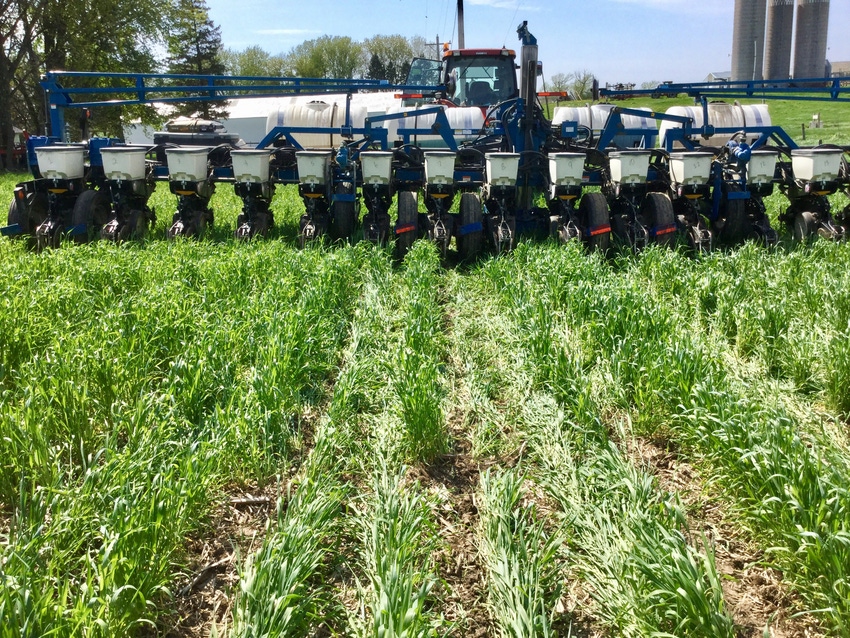
Think Different
When trying new practices, Minnesota farmer Tom Pyfferoen recommends taking a measured approach.
· Take baby steps...don't run.
· Understand you will make mistakes. That it is how you learn.
· Take time to do things right, such as emphasis on seed-to-soil contact.
----------
When Tom Pyfferoen tried no-till on some sandy, gravelly soils, his goal was better yields. The results started him down a soil and water conservation path he didn't expect, leading to tile outlet water with lower nitrate levels than the EPA allows for drinking water.
"After going no-till on some problem fields, I could see the soils improve. Corn yields went from 80 to 90 bushels per acre about 15 years ago to 200, while soybeans went from 35 to 40 bushels to well over 60 bushels," says Pyfferoen. "I moved on to more and more no-till corn into soybean stubble and then to no-tilling soybeans and finally into cover crops."
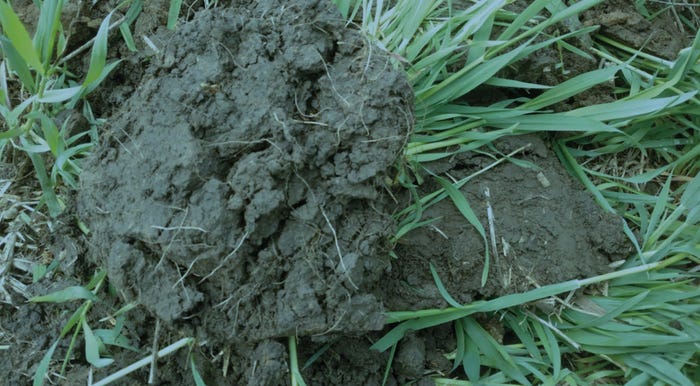
The Pine Island, Minn., grower has continued to build on his first results. As yields started to improve, he increased fertility with fall broadcast of potash, MAP, manganese and sulfur. He also began splitting nitrogen between planting and sidedress.
Prevent plant began cover crops
Prevent plant acres in 2013 introduced him to cover crops, including sorghum, clover and ryegrass. The following year he tilled some, but planted directly into other fields, learning as he went.
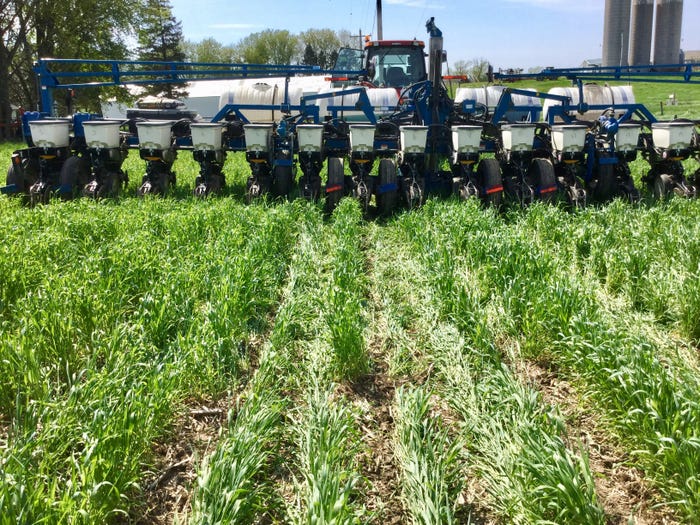
The first time Tom Pyfferoen planted into standing cereal rye, he had to stop and question himself on what he was doing. After seeing the results, he no longer doubts the benefits to his bottom line or the environment.
"We had cutworms in the ryegrass," he says. "We went in with Pounce and cleaned them out, but they could have devastated us if we hadn't been paying attention."
In 2014 he skipped covers as he concentrated on adding tile to fields, but returned to planting cereal rye in fall 2015. He got a good stand with post harvest seeding with his Kinze 15-inch row planter.
Burning down thick rye was heart wrenching for the former dairyman, he recalls. What followed was equally frustrating as rains delayed planting corn until the 18th of May.
"We planted 95-day corn, sidedressed, sprayed and this past fall harvested 213 dry bushels per acre," says Pyfferoen.
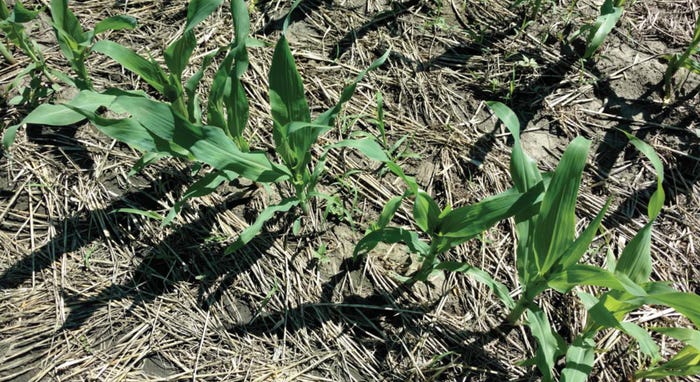
By the time corn has reached the 3-4 leaf stage, the cereal rye thatch is nearly gone and weeds are starting to emerge.
Tile line nitrate success
He also harvested some very positive data. A local University of Minnesota extension specialist had asked to monitor nitrogen in tile lines. Pyfferoen agreed, and samples were collected from April through October when the crop came off.
"He never found nitrate levels higher than six parts per million, safe for drinking water," says Pyfferoen, noting that the federal standard for maximum nitrate in drinking water is 10 ppm.
This was exciting news to share with the group of area growers he had begun meeting with two years prior. They shared a desire to reduce nitrogen loss and soil erosion into the Zumbro River Watershed in southeastern Minnesota. Tony Rossman, an area corn, soybean, canning crop and beef producer, was one of them.
"It is a matter of being proactive instead of reactive," he says. "If we don't do it, we'll face more regulations down the road. Tom's test results told us we were on the right path."
Watershed farmers band together
Rossman notes that the group recognizes that these practices are the right thing to do for the environment and for their bottom lines. The loose knit group of about 15 farmers meets throughout the winter and early spring. Some, like Pyfferoen, have tried a variety of practices, while others may have practiced no-till for years but never tried cover crops.
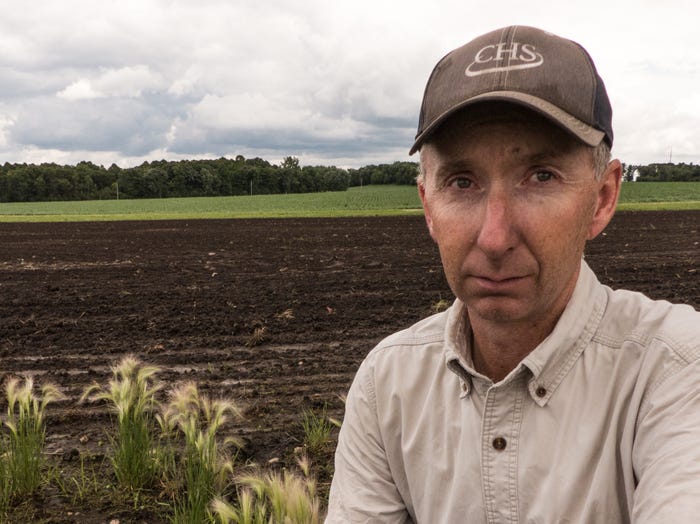
Tony Rossman is one of an informal group of about 15 growers in the Zumbro River Watershed proactivly searching for ways to protect water quality. He recognizes the need to reduce nitrogen loss and erosion from fields like the one behind him. He is expanding his use of nitrate testing, split applications, reduced tillage and cover crops.
"We get together once a month to compare notes on what we have experienced or heard about and sometimes bring in a speaker," says Rossman, who feels a certain sense of urgency. "Weather events are getting more common, with heavy rains like we saw this past spring. We just have to do a better job holding this precious topsoil."
He is excited about what he has experienced and how he can integrate new practices into his operation. He has worked with grazing cover crops, planted following canning peas, and is expanding that experience to post fall harvest. He has also begun no-tilling corn into soybeans, splitting his nitrogen applications and using in-season soil and tissue testing to get a better handle on nitrate availability and plant response.
Spokesman for agriculture
Rossman considers Pyfferoen the anchor of the group. "This has become a real passion for him," says Rossman. "He is a great role model."
Whether Pyfferoen sees himself as a role model or anchor is hard to say. He does see himself as a spokesperson for agriculture, something he says that every farmer needs to be. He has met with various groups to discuss what he and the others are doing.
"You have to keep it simple, but you have to tell your story whenever you have the opportunity, whether it is at the doctor's office or when you go to the grocery store," he says.
Pyfferoen tells the story with pictures and at times with field days. This past April he hosted an NRCS field day on his farm. The drizzle didn't stop the 67 attendees from walking across some of the 700 acres of cover crops he planted in the fall of 2016 – a walk that he notes didn't leave their shoes muddy, thanks to the green covers.
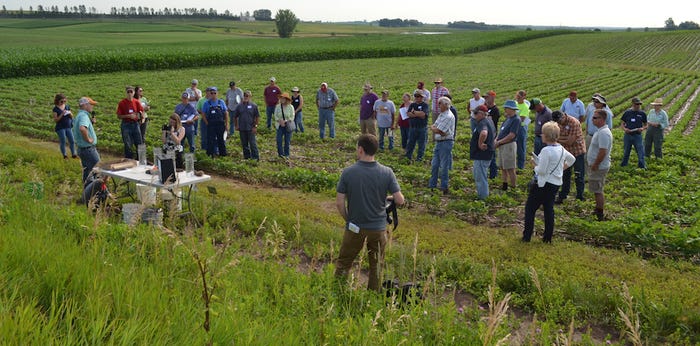
One of the key things he shares with the local group is to take a chance and have faith in what they are trying. He recalls his first time planting into standing ryegrass. "My guts turned inside out when I turned around to watch the planter. I had to stop and think," he recalls. "After seeing the results, I have the confidence to go and never look back."
About the Author(s)
You May Also Like




